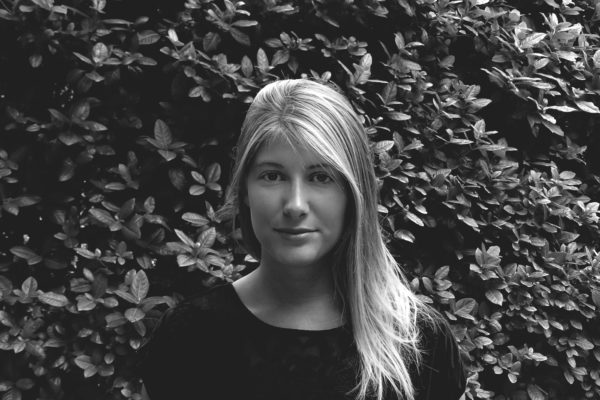In Kate Burke’s pieces, there lies a sense of contrasts and tension. Whether it’s welded steel on torn muslin or 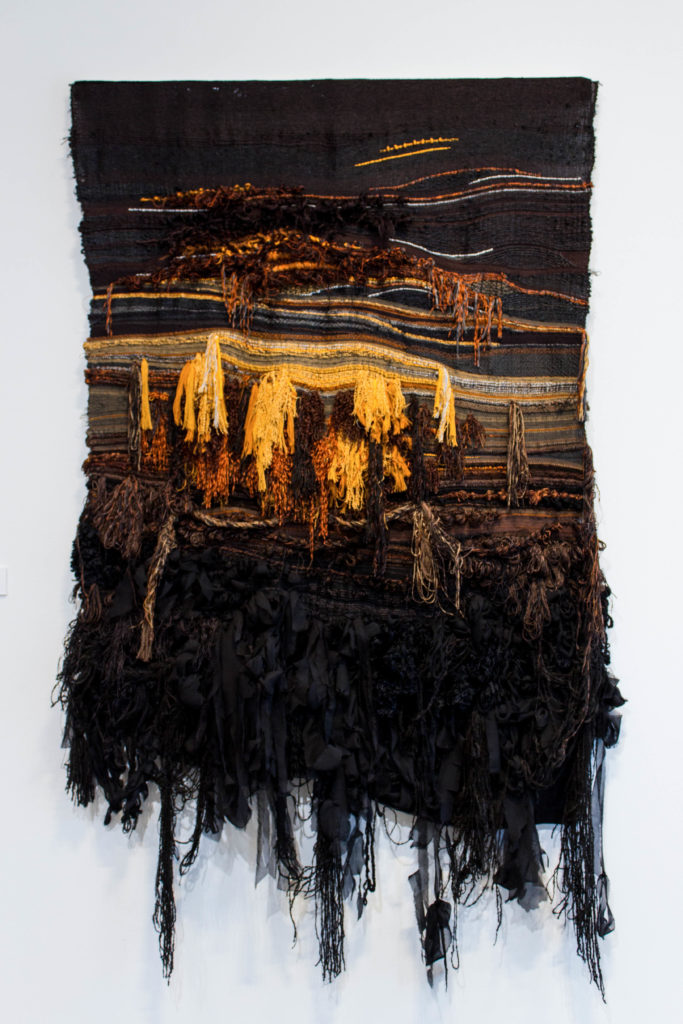 pasted fragments of painted papers, the eye is drawn back and forth from one detail to the next in an attempt to take it all in.
pasted fragments of painted papers, the eye is drawn back and forth from one detail to the next in an attempt to take it all in.
Echoing the movement found in organic forms like rock formations or coral and through nostalgic material like woven yarn and scrunched velvet, Burke’s pieces feel modern, emotional, and textured with layers of meaning.
Kate grew up in Fayetteville, Georgia, with parents who worked as police officers. Even though her grandmother taught her how to sew as soon as she could grip a plastic needle, Burke was always expected to become a pediatrician. As a way to fast-track her way to success, friends and family encouraged this dream. Yet she soon found that her dedication to research and interest in representational sketching of people and objects started to split in two directions: one in the arts, one in the sciences.
Burke ended up graduating from the University of Georgia with a degree in Fabric Design and moved to Atlanta in search of opportunities and inspiration.
Here, she talks with CommonCreativ about meshing art with science, how textiles relate to humanity, and why more people should work to understand the things that scare them.
CommonCreativ: What got you into art?
Kate Burke: My art background has a strong root in crafting. I grew up watching the television program The Caroll Duval Show at my grandmother’s house, which consisted of this Martha-Stewart-esque lady giving a step-by-step rundown through various eclectic crafts, just as a cooking show would do. It’s what launched me into the three-dimensional world, as polymer clay became my first medium as an 8 year old.
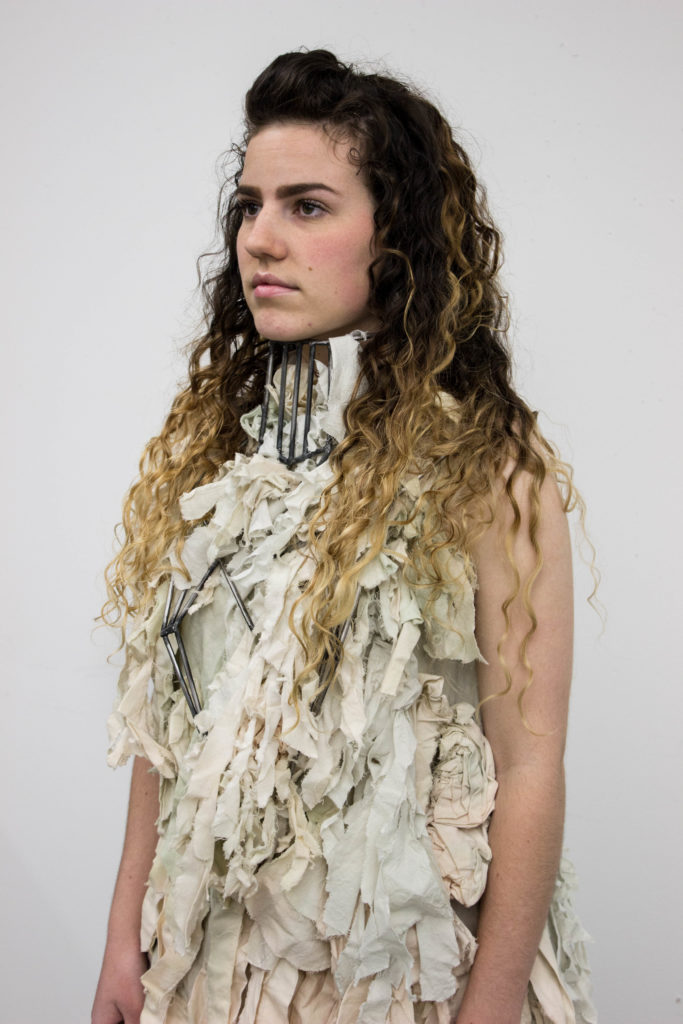 My grandmother also taught me to crochet and sew, and she gave me my first plastic table-top loom (a memory I had forgotten about until years into my textile degree). I had always been on the more artistic side growing up, drawing often and making stellar school projects. It wasn’t until I went to the University of Georgia that pursuing art as a career struck me as a possibility. I went in with a Biochemistry and Molecular Biology major which, don’t get me wrong, was particularly compelling — the passion just wasn’t there. By the end of my freshman year I had decided to pursue a music major in flute, and by the end of the summer I was in the art school.
My grandmother also taught me to crochet and sew, and she gave me my first plastic table-top loom (a memory I had forgotten about until years into my textile degree). I had always been on the more artistic side growing up, drawing often and making stellar school projects. It wasn’t until I went to the University of Georgia that pursuing art as a career struck me as a possibility. I went in with a Biochemistry and Molecular Biology major which, don’t get me wrong, was particularly compelling — the passion just wasn’t there. By the end of my freshman year I had decided to pursue a music major in flute, and by the end of the summer I was in the art school.
CC: What informs current style?
KB: My textiles and paintings are pretty different. Fields of color, collage, different planes of texture, and ideas about memory and thought inform my paintings. While my paintings are more of a dissection of my past, my textiles dive deeper into the emotions and situations I currently experience.
I take my Southern Baptist background, the tension between holy justice and societal justice, my disappointments, and feelings of betrayal and attempt to articulate them in my textile pieces. I feel like both of these ideas explore the tension of what is real and what isn’t, and the broad umbrella that my work falls under is a conversation about perception and the results of perception shifting over time. Ideas of transcendence, repetition and ritual, truth, facade, deception, and memory have led me to pose questions about our responses to ourselves, our past, our relationships and environment, and our perceptions of truth.
CC: And your love of science, how does it influence you?
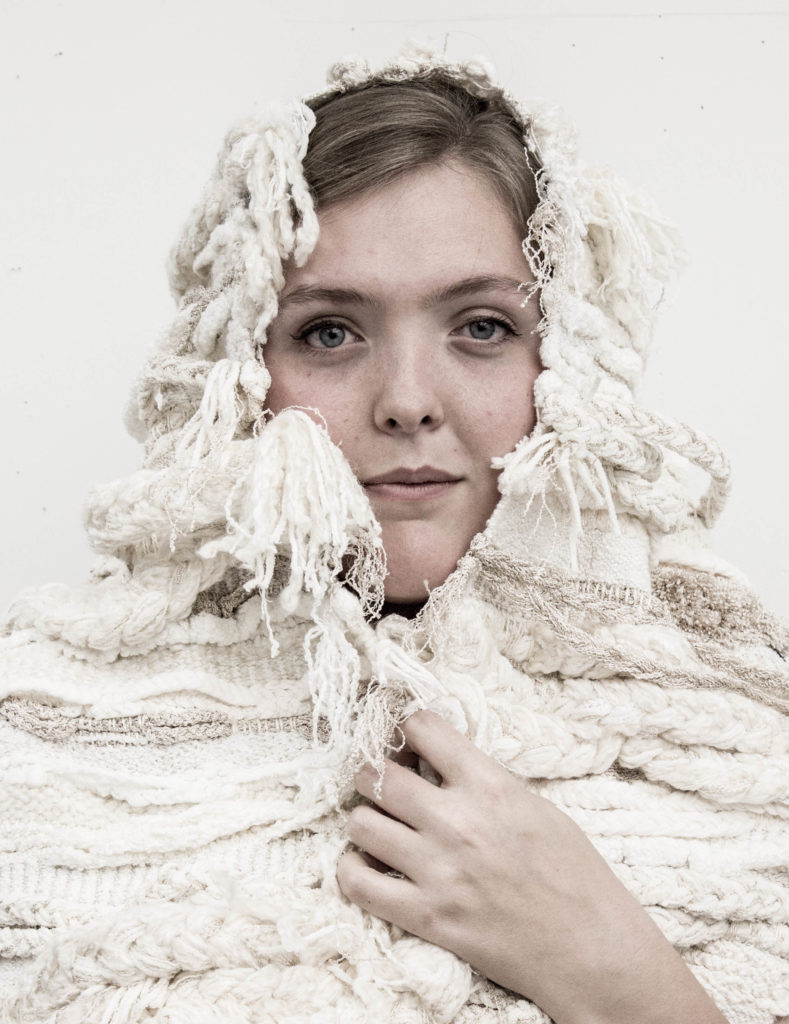
Kate Burke
KB: I love figuring out the “answer.” The ideas of wholistic truth and definite right and wrong are incredibly enticing to me. When I get stressed out I crave math problems and logic puzzles; if I can’t figure out the solution to my problems in my life, then I can definitely figure out the solution to something like that. However, I know that the majority of life’s circumstances are more complicated than black and white, and I try and take that tension and explore it throughout my work and research.
CC: Where do you find inspiration?
KB: I have a junk-drawer of inspiration sources, from graphic design and typography to Mary Oliver poetry, heartache and betrayal, psychological thought patterns and diagnoses, text conversation, Instagram culture, history, and current events. As I said before, I find anything and everything interesting and I can be inspired by someone telling me how they built a beautiful chair or why they’re upset at their best friend.
I love collecting information about myself and society to try and locate the common threads through everything. It’s very much a detective mentality: If I can collect all the tiny details about someone or something I can figure out the “why” or “why not.” The frustrating thing about that, though, is sometimes the “why” or the “why not” makes no sense. I suppose my inspiration in most things comes from a desire to understand deeply — to understand the cause and effect of circumstances and relationships to continue to move forward or solve a specific problem.
CC: When do you know a piece you’ve created is complete?
KB: Resolution, when I feel like it has effectively communicated or questioned the ideas I’m looking to articulate. I’m finding that each piece I’ve made, especially the pieces that I haven’t advertised or been proud of, were perfectly necessary for getting me where I’m at. I’ve continued to make even when I’m confused about what direction I’m moving in or what purpose I have or don’t have. Hindsight is super helpful in understanding why some pieces worked out and why some haven’t, and I use it sometimes to go back into pieces once I’ve figured out more clearly what my purpose was in making them. Rummaging through my old sketchbooks and writings and critically looking at the pieces I’ve made over the past year has been incredibly helpful in streamlining the work I’m currently making.
CC: What are your favorite tools and mediums?
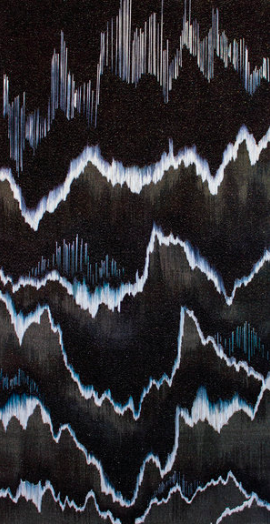
Inbetween Now and Then
KB: Textiles textiles textiles textiles. There’s something so equally stunning, cheeky, gripping, luxurious, and common about each fabric and spool of yarn I come into contact with. Textiles’ connection with craft allows a textile piece to bridge into a connection with our every day. Similar to sculpture — as it invades our physical space and demands to be acknowledged as a part of our reality — textiles really are a part of our every day: our clothing, dishcloths, carpets, sofas, cars. We’ve got a visceral deep connection with fiber. When we see it in a fine art context, I think it can speak to the deepest parts of what make us human.
CC: Thinking back to all of your work, what are your favorite pieces that you’ve made?
KB: Looking back there are definitely pieces that I’m fond of, including the piece “Inbetween Now and Then,” from my exit show in school, and “Birthday Boy,” one of the first purely abstract pieces I’d ever made. “Inbetween Now and Then” bridged my love of painting and textiles, and “Birthday Boy” was the first “I’m gonna make what I want to make and I don’t care what it looks like” piece.
While I love these pieces, is it too weird to say that some of my favorite pieces I’ve made are the ones I’m currently working on, or some of the ideas I’ve got boiling in my mind? I think that’s my favorite thing about art making — constantly searching, experimenting, thinking, and finding new ways to articulate and question a specific idea or experience. That’s why I keep making, and that’s why I’ll always make. It’s something I’m willingly forced to do, I can’t help it.
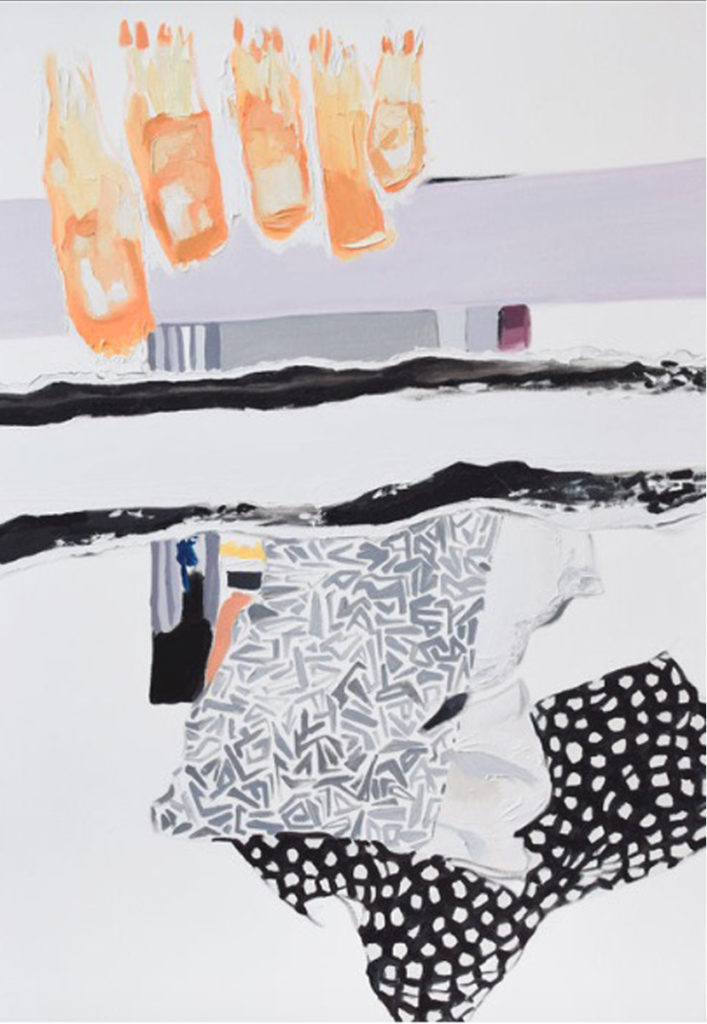
Birthday Boy
CC: Got anything currently in the works?
KB: Yes, always! I’m participating in a group show at the Lamar Dodd School of Art in September, focusing on the connection between technology and relationships. Details about that can be found on my Instagram as the opening gets closer! I think there’ll be an artist talk too, which’ll be fun. I’ve also got a show planned for summer of 2019, so you’ll have to stay in touch to hear more about that.
CC: What do you love about Atlanta?
KB: I haven’t been here for very long, but I think Atlanta is one of the most exciting places to be right now. I’ve noticed that this city is anything but stagnant; it is constantly growing and pushing and trying to come up with new and authentic ways of living. I also love the intensity that the people of Atlanta use in confronting social issues. While there is always something to improve on, they actively try and change the community around them. It is remarkably inspiring.
CC: Any dreams for yourself?
KB: I’ve got this crazy idea to go to grad school up north. Which probably isn’t so crazy, but I am dying to get my MFA. I’m in the process of researching schools and figuring out which ones would best fit the vague ideas I’ve got for my future practice. RISD has a partnership with Brown where graduate students have the same privileges at both schools: the same access to professors, research, and libraries. I want to go somewhere that can cultivate both aspects of my mind to create something that intersects the art world and the science world. I want my practice to be something that is equally compelling to look at and conceptualize, while also cutting to the deepest parts of what makes us human. And I think bringing science and academia into the conversation can do something to help that.
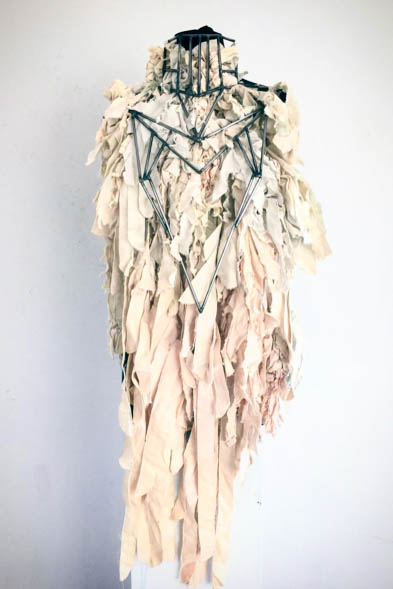 CC: And dreams for the world?
CC: And dreams for the world?
KB: I want us all to understand that we are 100 percent like the person who is the most different from us. I think resolving our differences in the truth that we all struggle just as much as the next individual would do a lot for our society. There is a trend to victimize those whose brokenness is more visible than others, which is just, honestly, not fair. Thinking in that matter probably upsets a lot of people, but I would push them to figure out why that upsets them, and go from there. Making attempts to openly understand the things that frustrate or scare us the most will do wonders for your health and your community.
CC: Do you have any advice for other budding artists?
KB: I will say that you have to want it; you have to want it so badly. In the presence of comparison and jealousy — things that I believe a lot of artists may struggle with — you have to realign your mind with why you make art in the first place. Is it for money? Is it for recognition? Or is it because you’re compelled to do it and hope that you visually communicate the things you desire to? It’s a tough vocation to pursue for most, and can be remarkably disheartening some days, but I believe that the romantic things in life — art, music, and relationships — are what get us up and going each day. We endure to see those things thrive in our life.
See more of Kate’s work on her portfolio site and Instagram.





